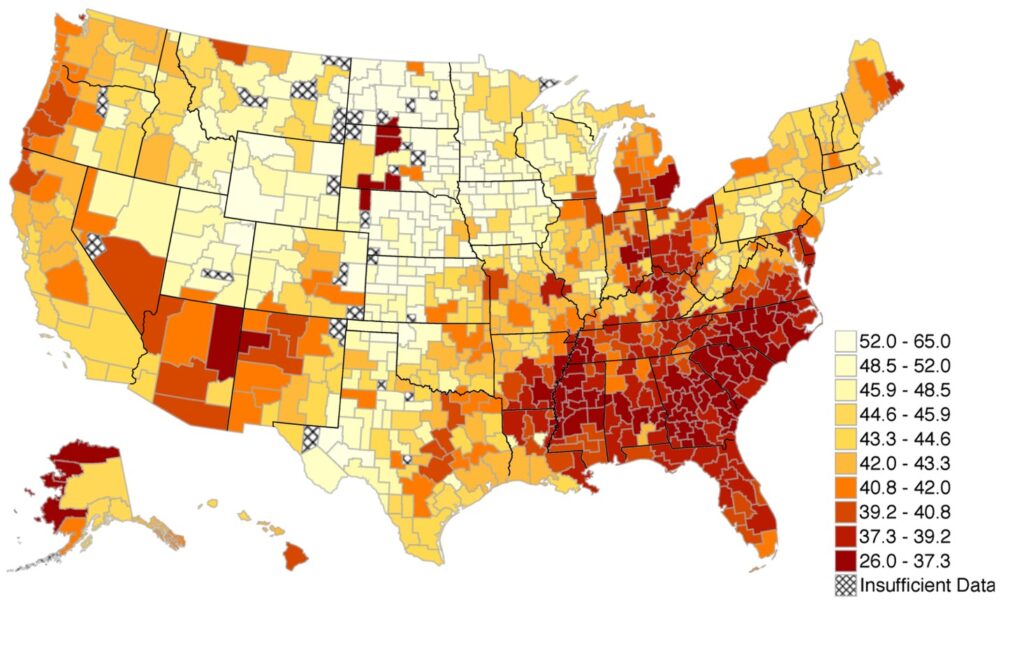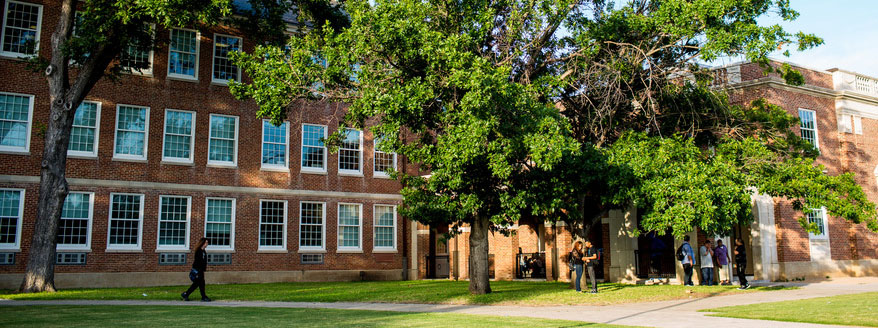I grew up in Joiner, Arkansas—a small farming community located in the heart of the Delta; the population back then was about 800, and now it’s even less than that. My grandfather, who raised me alongside my grandmother, worked as a sharecropper—and my family made sure I got a good education because they knew school was the key to a better life. In my town that was the exception rather than the rule. Joiner, like much of rural America, is a place where if a kid is raised without much money, they’re likely to live the rest of their life that way.
Recently, I thought back to my childhood town while reading Harvard’s report “The Equality of Opportunity Project” which looks at social mobility (the likelihood a kid will make more money than their parents) across the United States. The study found that while some parts of the country are “lands of opportunity” where social mobility is high, in far too many other places the opposite is true.

Social mobility across the United States: Chances a child from a family with an annual income of less than $30,000 will grow up to earn an annual income of more than $75,000. More red means less mobility.
We all know that wages for college graduates are much higher than for nongraduates—a person born to a low-income family who earns a college degree is three times more likely to move into the upper end of the income distribution than someone who doesn’t. So, it makes sense that a good place to start when it comes to improving social mobility is making sure our kids get a good K-12 education so that college is an option.
In Joiner, like in many small communities, farming and manufacturing are the main careers. And the perception is that you don’t need a degree for these jobs, so why bother trying too hard in high school? But the reality is if you want a better paying job in any field you pretty much have to go to college or obtain some type of postsecondary education—and public schools are instrumental in preparing kids for that next step.
I’m not saying we should encourage kids to leave their hometowns forever, far from it. Even today, I live just 20 minutes from Joiner. But we do want to give them access to all the options available to them—and to some extent, it’s the school’s responsibility to make sure kids are prepared to succeed, whatever their choice.
Growing up, there was no library and no community foundation running after-school programs in my town. For me and other kids whose families didn’t have the means to provide additional experiences, if it didn’t happen through the school, it didn’t happen at all. I’m not saying there weren’t other resources, but in my experience, schools in rural areas accept being a sort of community hub.
The position of rural schools presents an immense opportunity for those of us working in education, which is why I’m particularly excited about the rural work TNTP is beginning to do. In Tennessee, for example, we’re partnering with both urban and rural districts to strengthen academic outcomes around early literacy, and improve the quality of instruction in career and technical education programs.
Much of the focus in education reform has been on urban districts, so there’s still a lot to learn, and to do. Of course, every place is different, and what’s true in Arkansas might not be true in Tennessee. That said, there are a few things I’ve found helpful when collaborating with our rural partners:
Teacher engagement is community engagement. Some of our biggest allies in rural communities are the educators themselves. Not that this isn’t true in urban areas, but in a small town, the math teacher is probably also your neighbor or goes to your church.
Aside from schools, other valuable resources are community-based organizations and faith-based organizations. In a rural setting, there are often only a few community-based organizations, so to reach people we’ve had to go through different avenues than we might in a larger city. For example, we’re often hesitant to make explicit connections between religious organizations and our schools, but amplifying the great things happening in our communities means reflecting the culture of those communities. And to many people, a church or place of worship is at the heart of their town.
The local economy matters, a lot. When we think about working in rural areas, we have to figure out what's driving the local economy, and try to make a connection between that and what’s possible for our young people. We have a long way to go when it comes to tying education to economic development and workforce development for a community—in rural and urban settings—but when a town’s entire economy is built around a single industry, this piece of the work can’t be forgotten.
I take one look at the mobility map and feel like there has to be more we can do for our kids living outside big cities. To ignore these children, just because they go to school in a small district or live in a town that’s hard to get to, is simply unethical. If we want our whole country—and not just parts of it—to be “the land of opportunity,” we have to take steps to ensure all kids have what they need to be successful, both as members of their communities, and as change-makers in the global economy.





